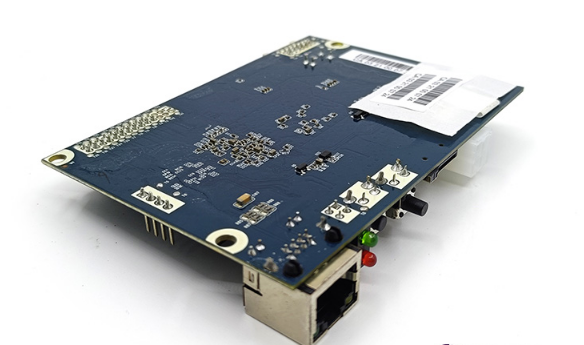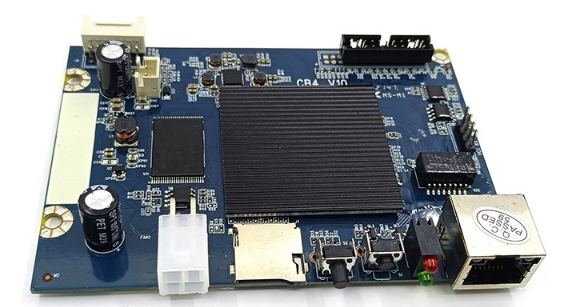CB4 V10 control board troubleshooting for WhatsMiner M31s+ and M32.
CB4 V10 Control Board Troubleshooting for WhatsMiner M31s+ and M32
Cryptocurrency mining is a complex and demanding operation that requires precision, reliability, and efficiency. At the heart of any mining rig lies its control board, a critical component that ensures seamless communication, power distribution, and performance optimization. For miners operating the WhatsMiner M31s+ and M32 models, the CB4 V10 control board stands out as a professional-grade solution designed to meet the rigorous demands of modern mining operations. In this article, we’ll explore the CB4 V10’s features, advantages, and practical troubleshooting tips to help you maximize your mining efficiency and minimize downtime.
Product Introduction: The CB4 V10 Control Board
The CB4 V10 control board is a state-of-the-art component engineered specifically for the WhatsMiner ecosystem. Designed with compatibility in mind, it seamlessly integrates with the entire M-series lineup, including the M20s, M21s, M30s, M31s+, and M32 models. This universal compatibility makes it a versatile choice for miners running multiple WhatsMiner rigs or planning to upgrade their existing setup.
At its core, the CB4 V10 boasts an industrial-grade PCB architecture, ensuring durability and reliability in high-demand mining environments. It operates efficiently within a temperature range of -5°C to 35°C, making it suitable for a variety of mining setups, from small-scale operations to large-scale data centers. The board’s robust design is complemented by its advanced thermal management capabilities, which help maintain optimal performance even under challenging conditions.
Connectivity is another area where the CB4 V10 excels. It features a single DVI port for monitoring and an Ethernet connection for network integration, ensuring stable communication with mining management systems. Power delivery is handled via an IEC C19 16A connection, providing the necessary stability for continuous operation. Together, these features make the CB4 V10 a reliable and efficient control board for professional mining operations.
Product Advantages: Why Choose the CB4 V10?
The CB4 V10 control board offers several key advantages that make it an ideal choice for miners using the WhatsMiner M31s+ and M32 models. Here’s a closer look at what sets this board apart:

1. Universal Compatibility
One of the standout features of the CB4 V10 is its ability to integrate seamlessly with the entire WhatsMiner M-series lineup. Whether you’re running an M31s+ or an M32, this control board ensures consistent performance across different models. This versatility simplifies inventory management and reduces the need for multiple control boards, making it a cost-effective solution for miners operating diverse rigs.
2. Industrial-Grade Reliability
Mining operations demand components that can withstand harsh conditions and extended periods of use. The CB4 V10 is built with premium PCB materials and components, ensuring stable operation in demanding environments. Additionally, it comes with a comprehensive 160-day warranty, providing peace of mind and long-term reliability.

3. Optimized Performance Architecture
The CB4 V10’s all-in-one design philosophy delivers high hashrates while maintaining superior efficiency. This is crucial for maximizing mining profitability, as it reduces power consumption without compromising performance. The board’s advanced thermal management capabilities further enhance its efficiency by maintaining optimal temperatures even during prolonged operation.
4. Professional-Grade Connectivity
Stable connectivity is essential for uninterrupted mining operations. The CB4 V10 features enterprise-level power handling through its IEC C19 16A connection, ensuring reliable power delivery. Its Ethernet networking capability provides robust communication with mining management systems, minimizing the risk of connectivity issues.

5. Simplified Maintenance
The CB4 V10’s streamlined design simplifies installation and maintenance procedures. This reduces operational downtime and technical complexity, allowing miners to focus on maximizing their output rather than troubleshooting hardware issues.
6. Future-Ready Design
The CB4 V10 is built with forward compatibility in mind, ensuring long-term value and adaptability to evolving mining requirements. This future-ready design makes it a smart investment for miners looking to stay ahead in a rapidly changing industry.
Practical Troubleshooting Tips for the CB4 V10 Control Board
While the CB4 V10 is designed for reliability, occasional issues may arise due to environmental factors, power fluctuations, or wear and tear. Here are some practical troubleshooting tips to help you address common problems and keep your mining operation running smoothly:
1. No Power or Boot Failure
If your WhatsMiner M31s+ or M32 fails to power on or boot up, the issue may lie with the CB4 V10 control board. First, check the power connection to ensure the IEC C19 16A cable is securely plugged in. Inspect the power supply unit (PSU) for any signs of damage or malfunction. If the PSU is functioning correctly, verify that the control board is properly seated and connected to the mining rig’s components.
2. Connectivity Issues
Intermittent or lost connectivity can disrupt mining operations and reduce efficiency. Start by checking the Ethernet cable for damage or loose connections. If the cable is in good condition, inspect the Ethernet port on the CB4 V10 for debris or damage. Reset the network settings on the miner’s interface and ensure the IP configuration is correct. If the issue persists, consider testing the control board in another rig to isolate the problem.

3. Overheating
The CB4 V10 is designed to operate within a temperature range of -5°C to 35°C. If your mining rig is experiencing overheating issues, ensure the environment is adequately ventilated and cooled. Clean the rig’s fans and heatsinks to remove dust buildup, which can impede airflow. If the problem persists, verify that the thermal sensors on the CB4 V10 are functioning correctly and consider upgrading your cooling system.
4. Hashrate Drop
A sudden drop in hashrate can indicate an issue with the CB4 V10 control board or other components. Begin by checking the miner’s settings to ensure they are configured correctly. Inspect the DVI port and monitor for any anomalies in the miner’s performance metrics. If the issue persists, test the control board in another rig or replace it with a known-good unit to identify the root cause.
5. Aesthetic Variations
It’s worth noting that the CB4 V10 may exhibit slight aesthetic variations between production batches. These differences do not affect the board’s core functionality or performance. If you notice such variations, rest assured that the board’s reliability and efficiency remain consistent.
Conclusion: Maximizing Efficiency with the CB4 V10 Control Board
The CB4 V10 control board is a professional-grade solution that delivers unmatched reliability, performance, and versatility for WhatsMiner M31s+ and M32 operators. Its universal compatibility, industrial-grade reliability, and advanced thermal management capabilities make it an essential component for optimizing mining efficiency and profitability.
By understanding the board’s features and implementing practical troubleshooting techniques, you can ensure smooth operations and minimize downtime. Whether you’re a seasoned miner or new to the industry, the CB4 V10 is a valuable investment that will keep your rigs running at peak performance for years to come.
For miners seeking a dependable and future-ready control board, the CB4 V10 stands out as a top choice. Its combination of cutting-edge technology and user-friendly design makes it an indispensable tool in the competitive world of cryptocurrency mining.